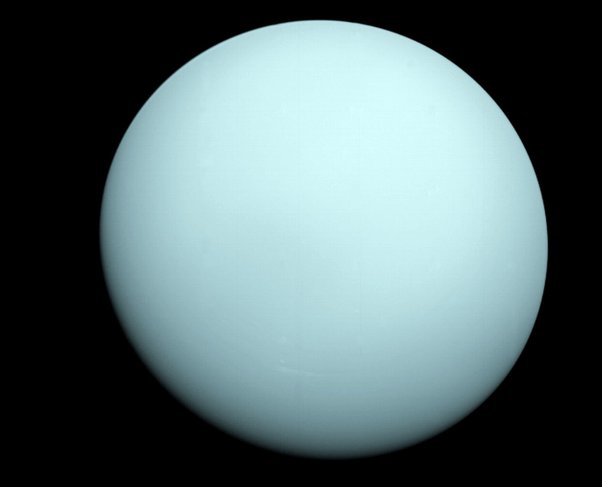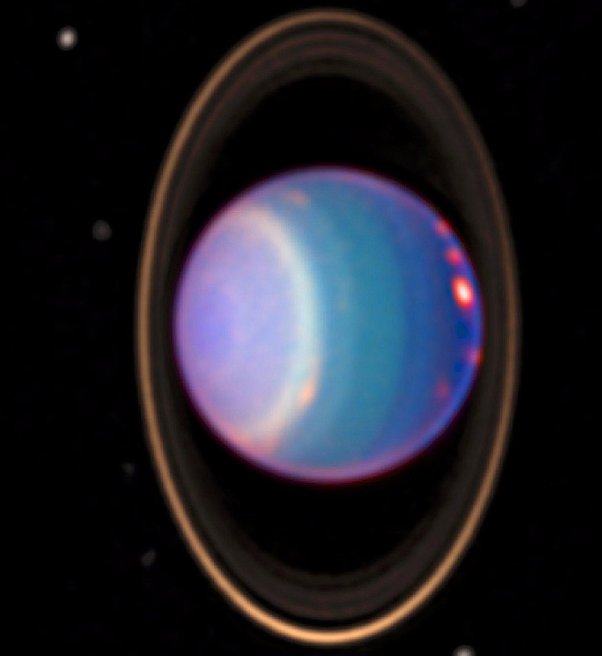You may be thinking of this picture:

taken in the visible spectrum by Voyager 2 as it passed the planet in 1986. And I would agree with you: looking at this picture, there are no visible features — it appears to be a large pale blue ball. Now, why does it look so boring? First, this is a picture of what is perhaps the coldest stable atmosphere in the solar system, with temperatures reaching 42 K. That doesn’t give a lot of energy for things like storms. Now, that being said, visible light is a very small portion of what we can use to look at the planet; here is a false color, near infrared image, this time including the surface, moons, as well as another feature of ice giants

rings!
This was taken in 1998 by the Hubble Space Telescope using the NICMOS camera.
Just because you don’t see them doesn’t mean they aren’t there. Uranus has some very interesting features about it. Did you know that Uranus rotates sideways? By sideways I mean its rotational axis is horizontal compared to its orbit of the sun rather than vertical to .it. Uranus also has rings, though they are hard to see because of their distance from the sun. And therein lays the rub; because of it’s distance from the sun it is hard to see Uranus’s most interesting features.
Scientists believe Uranus has an ocean of liquid diamonds on it. It has rings which are hard to see because of angle and distance. It has multiple moons.
All in all Uranus has a lot going on, we just don’t have a good seat to watch the action.






